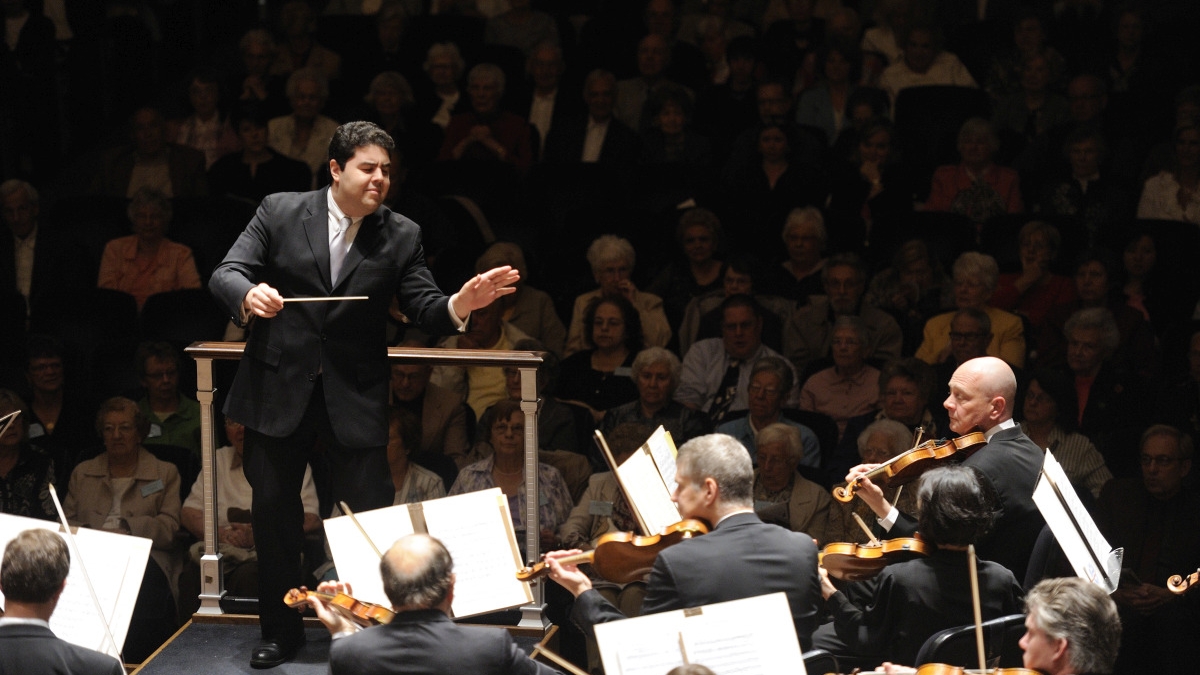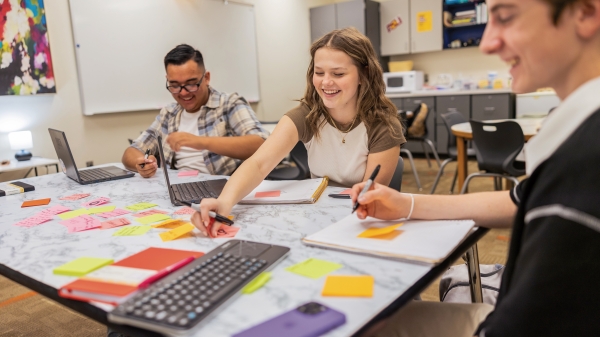Phoenix Symphony’s Tito Muñoz to conduct ASU Symphony Orchestra in Stravinsky’s ‘Rite of Spring’

Phoenix Symphony Music Director Tito Muñoz will conduct the ASU Symphony Orchestra in Stravinsky's "Rite of Spring" at ASU Gammage. Photo by Roger Mastroianni
Widely considered to be one of the most influential musical works of the 20th century, Stravinsky's “The Rite of Spring” is a ballet set to orchestral music, telling the story of various primitive rituals celebrating the advent of spring. The musical score has many features that were considered groundbreaking and almost scandalous for its time — it was first performed in Paris in 1913 — including experiments with dissonance, rhythm, tonality and meter. Thanks to this unique sound, it remains one of the most-performed classical masterworks.
The ASU School of Music is honored to welcome Tito Muñoz, music director for the Phoenix Symphony, as he conducts the ASU Symphony Orchestra in the influential musical score of this masterpiece on Wednesday, April 27, at 7:30 p.m. at ASU Gammage.
“The School of Music is very fortunate to have Tito Muñoz as a guest conductor for this final concert of the academic year, as he has been increasingly recognized as one of the most versatile and gifted conductors of his generation,” said Heather Landes, director of the ASU School of Music. “He provides our students with the special opportunity to collaborate with a talented professional conductor who is currently working in the Phoenix community, all the while inspiring them to realize their goals.”
Muñoz has enjoyed his time at ASU this semester and said he is impressed by the level of the School of Music, the dedication of the faculty and the professionalism of the students.
“Working with talented conservatory-level students, like the students at ASU, is a uniquely rewarding experience for me,” said Muñoz. “Their level of ability is nearly at a professional level, but they are still in their early stages of experience, so there’s a wonderful freshness to their music-making.”
The collaboration with the Phoenix Symphony is just one example of how the School of Music encourages student interaction with music professionals in the community.
“It has been thrilling to work with such an accomplished conductor as Muñoz; he knows exactly what he wants in the music and is clear on how to achieve it,” said Chaz Salazar, a master in flute performance student. “For me, it is inspirational to see a fellow young Latino classical musician in such a successful position on the podium; it re-affirms that my dreams are in reach.”
An additional highlight of the evening is a performance of the Beethoven Violin Concerto by soloist Steven Moeckel, concertmaster of the Phoenix Symphony. An internationally acclaimed violinist, Moeckel has appeared as a soloist and concert artist throughout the world.
“I am extremely passionate about music being the ultimate form of communication,” said Moeckel. “I think it transcends all boundaries, and through our performance we can make a huge difference in the world. I hope that message comes through in my playing and that it can fuel the students’ passion in music.”
Moeckel will play alongside Vladimir Gebe, a Doctor in Musical Arts in Violin Performance candidate, who is the concertmaster of the ASU Symphony.
“It is a real treat having Moeckel perform one of my favorite concertos literally three feet away from me,” said Gebe. “His sound is a world of color in itself, and the way he leads the orchestra as a soloist is telling of his experience as a concertmaster. He is such a natural violinist and musician, so it is very easy to follow and accompany him.”
This firsthand experience working with local professionals is invaluable for the students, as they will be able to see the dedication and focus it requires to make music-making their life’s work.
“If I could give a piece of advice to young musicians, it would be that it’s important to never lose sight of what being a professional musician really means,” said Munoz. “While we should always strive to keep our music-making fresh and rewarding for ourselves, there’s also a great responsibility to really communicate with our audience and give them an experience that will change them for the better. That’s what art is meant to do, and what we do is art.”
Admission is free. For more information, visit asuevents.asu.edu.
More Arts, humanities and education
Illuminating legacy at ASU
In 2020, the ASU Art Museum unveiled a groundbreaking installation, "Point Cloud (ASU)," by renowned artist Leo Villareal. The…

Name change for ASU's Mary Lou Fulton Teachers College reflects college's mission
Arizona State University’s Mary Lou Fulton Teachers College has a new name: the Mary Lou Fulton College for Teaching and Learning…

Exhibit to feature artwork inspired by oral histories from Arizona's oldest botanical garden
Though it is Arizona's largest botanical garden and has been an established touchstone of the community for more than 100 years,…

